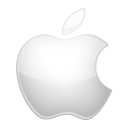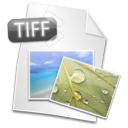
JPEG Image
JPEG or JPG is a commonly used method of lossy compression for digital images, particularly those images produced by digital photography. The degree of compression can be adjusted, allowing a selectable compromise between storage size and image quality. JPEG typically achieves a compression of 10:1 with little noticeable loss in image quality. Since its introduction in 1992, JPEG has been the most widely used image compression standard in the world, and the most widely used digital image format, with several billion JPEG images produced every day as of 2015.
The term 'JPEG' is an abbreviation/acronym for the Joint Photographic Experts Group, which created the standard in 1992. The basis of JPEG is the discrete cosine transform (DCT), a lossy image compression technique that was first proposed by Nasir Ahmed in 1972. JPEG was largely responsible for the proliferation of digital images and photos on the Internet, and later social media.
JPEG compression is used in a number of image file formats. JPEG/Exif is the most common image format used by digital cameras and other photographic image capture devices; along with JPEG/JFIF, it is the most common format for storing and transmitting photographic images on the World Wide Web. These format variations are often not distinguished and are simply called JPEG.
The MIME media type for JPEG is image/jpeg, except in older versions of Internet Explorer, which provides a MIME type of image/pjpeg when uploading JPEG images. JPEG files usually have a filename extension of .jpg or .jpeg. JPEG/JFIF supports a maximum image size of 65,535×65,535 pixels, so up to 4 gigapixels for an aspect ratio of 1:1. In 2000, the JPEG group introduced a format intended to be a successor, JPEG 2000, but it was unable to replace the original JPEG as the dominant image standard.




